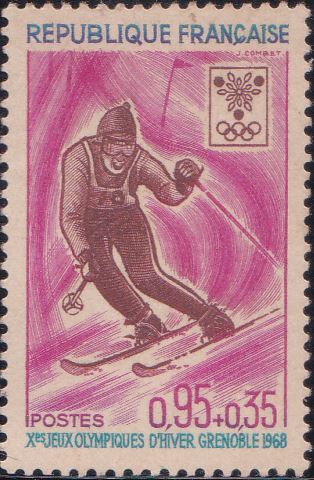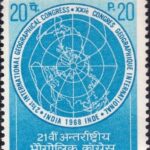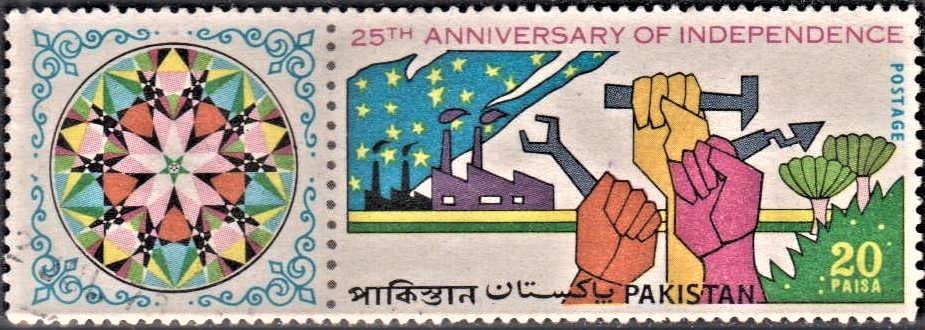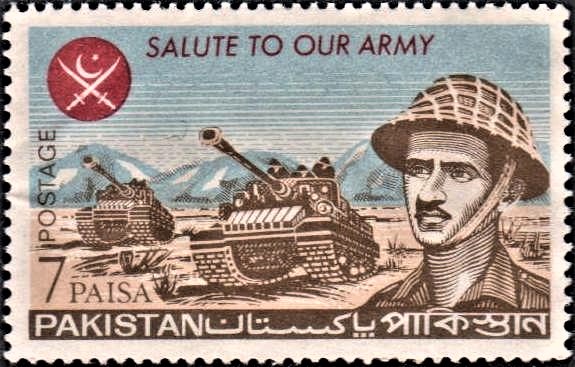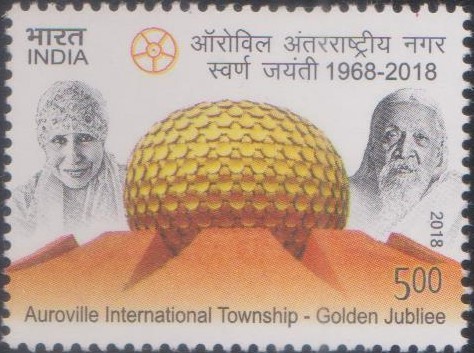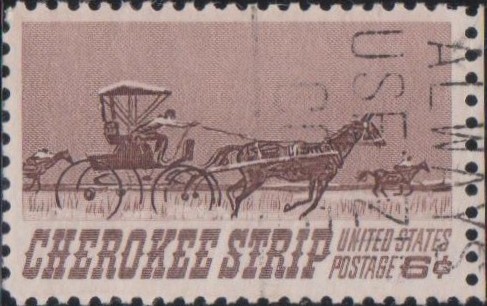
Cherokee Strip
A commemorative postage stamp on the 75th Anniversary of the Opening of the Cherokee Strip to Settlers, September 16, 1893 :
![1360 Cherokee Strip [United States Stamp 1968]](https://www.istampgallery.com/wp-content/uploads/2017/01/1360-Cherokee-Strip-United-States-Stamp-1968.jpg) Issued by United States of America
Issued by United States of America
Issued on Oct 15, 1968
Issued for : The white settlers’ rush into the Cherokee Strip is the one commemorated in this stamp. The price approved by Congress for payment to the Cherokees was $1.40 per acre. On September 16, 1893, a horde of 100,000 whites on horses or in buggies, poised at the Kansas–Oklahoma border, began on signal the dust-raising scramble to claim 40,000 homesteads. The U.S. 6c stamp, designed by Norman Todhunter, was released October 15, 1968 in Ponca City, Oklahoma in honor of the 75th anniversary of a dramatic event in the white man’s sweep westward.
Type : Stamp, Postal Used
Denomination : 6 cents
About :
- During the late 19th century the U.S. Government authorized mass conversions of American Indian tribal lands to private white ownership. As provided by the Homestead Act in 1862, the land was parcelled in 160-acre homesteads, numbering in the thousands. One such vast transfer took place in the northern portion of Oklahoma known as the Cherokee Strip.
- An act of Congress in 1830 had provided for removal of Indian tribes living east of the Mississippi River to lands in the west which became known as the Indian Territory. Into it moved five great tribes: Cherokee, Chickasaw, Choctaw, Creek (Muskogee) and Seminole. They settled on large tracts they owned according to treaties with the U.S.
- After the first railroad was built through Indian Territory in 1872, colonies of white “boomers” from the states tried to establish homesteads on an unassigned area. Alarmed Indian leaders went to Washington and complained that their hunting grounds were in jeopardy. Congress granted an appropriation to compensate the Indians, and President Benjamin Harrison opened the unassigned land for white settlement. Upon official signal at noon April 22, 1889, homesteaders on horseback began the thunderous run to stake their claims.
- Every year or so the government opened another such strip of land to homesteaders. White ranchers and farmers raced into reservations of the respective Indian tribes: the Iowa, the Sac and Fox, and the Potawatomi–Shawnee in 1891; the Cheyenne–Arapaho in 1892; the Pawnee, the Tonkawa, and the Cherokee in 1893; and the Kickapoo in 1895. The last great strip opening was by lottery for homesteads in the Wichita–Caddo and Comanche–Kiowa–Apache lands in 1901.


